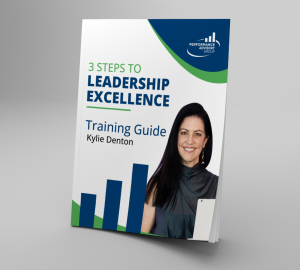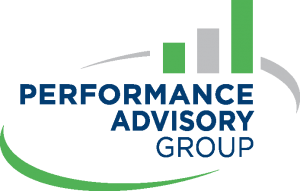Offering the best customer experience is essential when it comes to increasing revenue for your business and closing sales. Most businesses approach sales as a transactional process. The end goal is to simply generate a transaction. But there is a better way to approach the sales process.
One of the easiest ways to ensure you are offering the best customer experience is to move away from the transactional model and into a relational model. Essentially, instead of treating your customers as a number, a relational model encourages you to forge meaningful and genuine relationships with your clients, nurturing them through the buying cycle and encouraging clients for life.
Transactional Versus Relational
I am often approached by businesses that want to improve their customer experience in an effort to either increase revenue, improve the customer experience, close more sales, improve product or to support their team with how to deliver the right customer experience. A genuine customer experience is simply delivering what every customer wants.
A transactional model is a short-term way of working, where all efforts go into getting the sale at any costs. If you only focus on winning sales, without thinking about the customer, their problems and needs, then your business is likely to lose out in the long-term (and so will your staff and customers).
Relational selling focuses on building long-term relationships. Instead of just making a sale, you get to know your customer, understand the issues they are facing, and discuss their wants and needs now and into the future. This enables you to nurture them through the buying cycle and then retarget them in the future when they need you again. It is a long-term approach to selling that is not only right but will pay off for your business, your staff and your customers.
Moving away from the short-term transactional model and building ongoing relationships with your customers is the key to business growth. Relational selling not only increases the likelihood of repeat sales, but also encourages sales through word of mouth. It can also lead to a huge increase in revenue. When you have customers advertising your business for you, you are much more likely to achieve success.
Here are 6 tips that you can use to move from a transactional selling model to a relational selling model:
1. Understand Where You Are
Before a treatment is offered, you need to diagnose the problem. The first step is to take stock of where you currently stand. Are you more transactional or relational (be honest) or perhaps you fall somewhere in the middle? Now is the time to dive headfirst into your business and take an objective look at your model.
Jump on the phone and talk to customers, and spend time with your sales and service teams and financial planners. This first step relies heavily on listening. Don’t try to correct the problems immediately, instead just take it all in and make sure you have a good grasp on all areas of your current sales process.
When I work with businesses I spend a few days to a couple of weeks in this space – I want to really get to know the business, the people and the customers. It’s important not to rush this step, as it will help you gain critical information that can be used moving forward.
2. Understand Your Customer Experience Journey
The next step is to put yourself in your customer’s shoes and experience your business from their perspective. All too often, businesses make assumptions about their customers and what they are looking for, instead of taking the time to really understand their needs.
Often businesses look at what the business needs to make their life easier but we should also be looking at what our customers need to make their life easier to do business with us.
3. Create Conversation Frameworks
All staff need to know how to deliver an exceptional customer experience so creating a conversation framework that shows staff how to have meaningful conversations and build genuine relationships with clients is critical.
It also means that you have a consistent and unified approach to customer experience across your business. This allows you to provide clear expectations for staff and a beautiful consistent experience for customers.
4. Coach to the Framework
Conversation frameworks not only provide structure, but they also equip
your staff with questioning skills and closing skills so they feel more confident. Once you know what they need, you can put the measure in place to provide, support, and embed customer experience solutions.
Embedding a conversation framework within businesses requires people to change and/or adapt their behaviours. Behaviour change doesn’t happen overnight. To ensure change is successful and you create long-term sustainable change you need to look at areas that directly impact a person’s behaviour and ensure they align and support the new behaviours you want them to demonstrate. This can be done using coaching.
Coaching leaders are the leaders of the future and can make the biggest and most profound impact to the people and culture of organisations.
The goal of coaching is the goal of good management: to make the most of an organisation’s most valuable resources – their people.
I truly believe that all leaders need to possess the skills to support, develop and grow their team so they can provide an exceptional customer experience.
5. Encourage a Positive Work Culture
It’s not what you say, it’s how you say it. Culture isn’t something you can buy, rather it must be organic to the company. If you want to design, deliver or embed a meaningful experience for your customers, then it is important to adopt a tone for your business that reflects your values and the workplace culture.
A recent survey by SDL (Forbes) asked more than 1,800 millennials about their purchasing behaviour during the first quarter of 2014. The most important findings, from the perspective of customer service, was that these consumers naturally hop from one channel to the next in dealing with a company. They expect a consistent “voice” across those channels.
In another study, 60 percent of customers felt there should be a consistent voice across multiple channels. It’s important to make sure the conversation framework is consistent within all teams in the company. From marketing through to sales, your entire team must adopt the same tone in their job. If not, there will be inconsistencies that will result in lost sales and an inconsistent customer experience.
5. Monitor and Observe
Finally, inspect what you expect. Monitor and observe results. Once you’ve analysed the results, revisit Step 1. Look at the differences between where you were originally, and where your business is now. Providing the best customer experience is an ever-evolving challenge that requires constant maintenance and optimisation to ensure you are achieving the best results possible.
A Final Tip – Reward those who are performing well to set the standard within your business. If you recognise their efforts in front of your team, not only will it increase employee morale, but everyone will understand what is expected of them.
PS – Whenever you’re ready, here are FIVE ways I can help you become a better leader…
1. Take my FREE masterclass “3 Steps to Leadership Excellence”
A step-by-step roadmap to guide you from wherever you are now on your leadership journey to becoming a truly world-class leader.
2. Read my book “Empowering Employees Through Effective Delegation”
If you lead a team, you need to master delegation. Learn how to delegate effectively and what to do if it all goes wrong.
3. Book a 15-Minute “Discovery Call”
Develop a personalised leadership development plan that will get you results in the next 6 to 12 weeks and beyond.
4. Want to up your Leadership Game to the next level? Register to our Leadership Development Program
Find out more about our Leadership Excellence Program – Equipping leaders wit the necessary skills to lead high performing teams.
5. Take our 3 minute quiz to discover your Top 10 People Leadership Strengths
Thousands of people have taken our quiz and used their strengths to achieve their goals. Take the quiz today and see what you can achieve.
FREE Resources To Get You Started

Register for our FREE Weekly Leadership Development Webinars
Keep growing, inspiring and leading. Leadership is a journey not a destination, as leaders we should continue to grow ourselves so we can grow others. Join us for our FREE webinars where you'll gain valuable tools, resources and insights. Our workshops are designed for leaders and managers who want to take their leadership to the next level.
Take our FREE People Leadership Quiz
Thousands of people have taken our quiz and used their strengths to achieve their goals. Take the quiz today and see what you can achieve.


Watch our FREE Leadership Masterclass
If you're sick of being pulled from pillar to post every day, frustrated by under performing team members, or struggling with low confidence or imposter syndrome then this new leadership masterclass training is for you. I'll share the 3 most common warning signs and 3 simple fixes and a step by step plan to help you become more confident, trusted and respected leader who delivers results.
